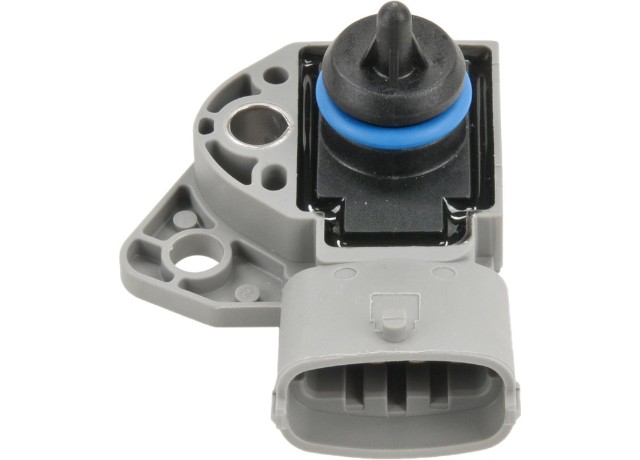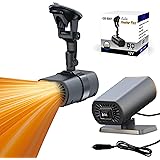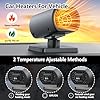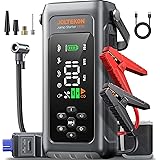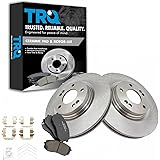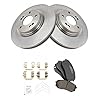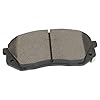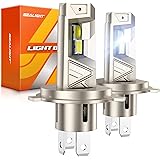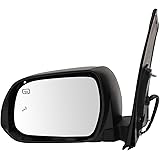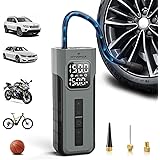Table of Contents
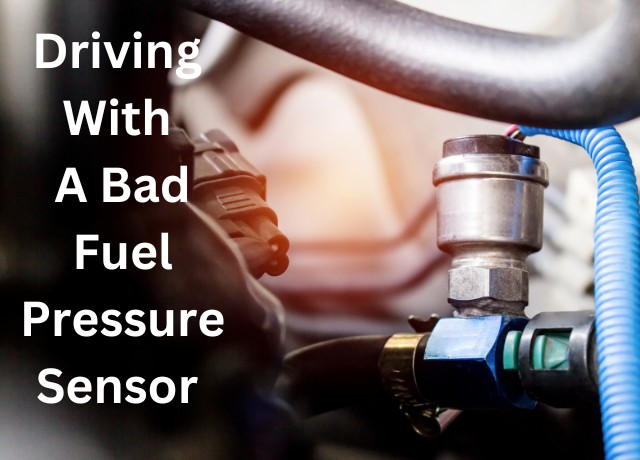
Our cars have a variety of sensors, but the fuel sensor is key to getting an accurate reading of our fuel level. It is important to note, however, that these sensors are susceptible to malfunctions and failures just like any other component.
When you have a bad fuel pressure sensor, knowing how long you can drive becomes crucial.
In this blog post, we will provide an overview of what a fuel pressure sensor does, why it’s so important to take care of it, and how long can you drive with a bad fuel sensor.
Let’s dive into what you need to know about driving with a bad fuel sensor!
What Is A Fuel Tank Pressure Sensor?
An essential component of the fuel system of a car, the fuel tank pressure sensor monitors fuel tank pressure. To ensure smooth and efficient engine operation, it plays a crucial role in maintaining optimal pressure levels.
A pressure sensor transmits information to the engine control unit (ECU) so that it can regulate fuel flow based on any changes in pressure.
You may not be able to get the best performance from your engine if this sensor is not functioning properly. Furthermore, these problems will likely require expensive repair due to unexpected malfunctions.
Keep this crucial car part in good condition now to avoid costly repairs later!
How Does It Work?
To detect changes in pressure, the sensor uses a diaphragm. In the fuel tank, positive pressure is created as the fuel pump operates.
This pressure is measured by the sensor, and a signal is sent to the engine control module (ECM) or powertrain control module (PCM) corresponding to it.
The ECM controls engine operation efficiently by continuously monitoring the pressure and regulating fuel consumption accordingly.
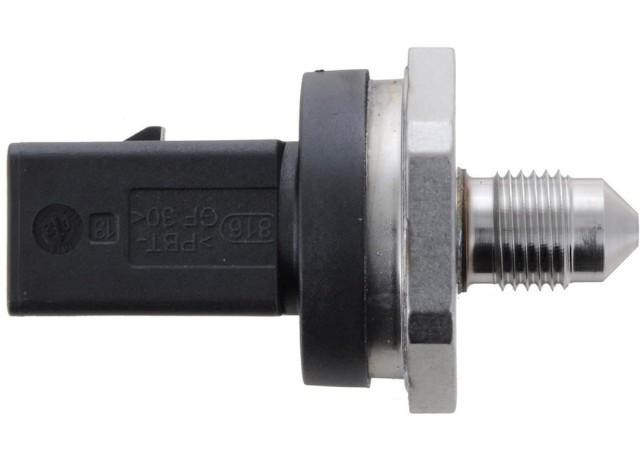
Functions of A Fuel Tank Pressure Sensor:
Fuel pressure sensors measure fuel tank pressure and relay that data to engine control modules. This helps regulate the fuel system and ensures optimal engine performance.
It Controls Fuel System Operation:
The ECM must manage the fuel system using the fuel pressure sensor. Fuel pressure and fuel flow can be adjusted dynamically by the ECM using data from the sensor.
The engine can be controlled precisely and run efficiently, maximizing efficiency and performance.
Prevents Engine Damage:
The wrong fuel pressure can damage your engine, causing
- Engine knocking
- Damage to your fuel injectors
By regulating fuel pressure within the optimal range, the fuel pressure sensor protects the engine from harm.
Improves Fuel Efficiency:
Fuel pressure sensors improve fuel efficiency by measuring tank pressure and regulating fuel flow. The result is better mileage and lower fuel expenses, saving you money on gas.
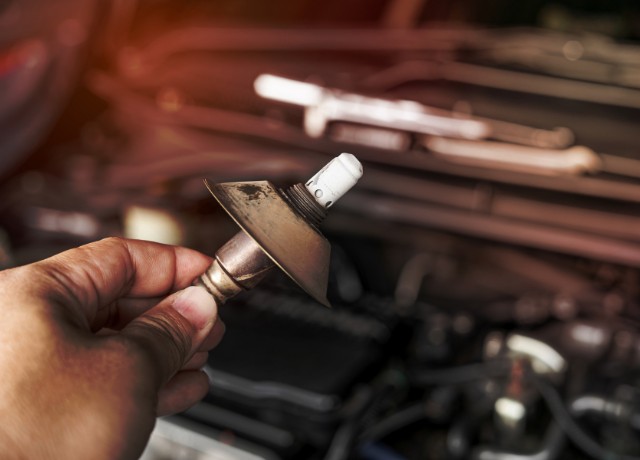
Can I Drive With A Bad Fuel Pressure Sensor?
Driving a car with a bad fuel pressure sensor is technically possible but not recommended. Depending on the severity of the issue, you may be able to drive to a repair shop for help. You should prioritize your vehicle’s safety and reliability, however, considering the potential risks.
You may experience:
- Sluggish Acceleration
- Frequent Stalls
- Diminished Fuel Efficiency
If your car’s fuel sensor is damaged.
Your issues will likely become more severe as time goes on if you continue driving with a malfunctioning sensor. Your car will eventually be difficult to start and maintain.
To ensure optimal performance, this issue must be addressed and resolved promptly.

How Long Can You Drive With A Bad Fuel Sensor?
Depending on the severity of the issue, you may still be able to drive your car with a bad fuel pressure sensor for 15-30 minutes. The performance and fuel efficiency of the vehicle, however, will decrease significantly.
The fuel rail pressure sensor can also be damaged by a bad fuel pump, which can lead to a bunch of problems.
Before the problem worsens, you should get your car checked out by a mechanic if you suspect a bad fuel pump or faulty fuel pressure sensor.
By driving with a bad fuel sensor, you risk overheating or engine failure.

Symptoms of A Bad Fuel Pressure Sensor:
The following are the symptoms of a bad fuel pressure sensor:
Check Engine Light Turns On:
A bad fuel pressure sensor could cause your Check Engine Light to come on unexpectedly. Your car should be checked by a mechanic right away, even if the sensor itself is not the main problem.
You can find out if your car has a problem by hooking up an OBD2 scanner and checking for error codes.
Fuel pressure sensors are often associated with codes such as P0190, P0191, P0192, P0193, and P0194.
Trouble Starting The Car:
Fuel pressure sensor issues might be causing your car to have trouble starting. Several problems can arise from a faulty sensor, including a hard start or a clicking sound.
You may find yourself stranded and frustrated when dealing with this issue due to a faulty starter.
Weak Acceleration:
Several issues could be causing your engine to struggle to go faster than idle speed. It is possible that a malfunctioning fuel pressure sensor could cause fuel delivery to be disrupted.
It is also possible for this problem to be caused by air leaks or blocked jets within the engine.
Engine Stalling:
Cars that stop running are often caused by low fuel pressure, which can be caused by clogged fuel filters or malfunctioning fuel pumps.
An engine stall can also be caused by faulty ignition or a blocked air intake, both of which can cause the engine to stall.
Unburnt Fuel in Exhaust:
It is possible to have excessive fuel injection into the piston if you have a faulty fuel rail pressure sensor. Your car’s exhaust system may emit leftover fuel as a result of incomplete combustion during each cycle.
Over-fueling your car can clog the engine, resulting in potentially serious problems. There may be an issue with the fuel rail pressure sensor if you see fuel droplets emerging from the muffler.
Poor Fuel Mileage:
An issue with the fuel system could be causing your car to consume excessive fuel. As the fuel pressure sensor regulates fuel flow to your engine, it plays an important role.
Make sure the fuel system of your vehicle is functioning properly to maximize its fuel efficiency.
Note: Regardless of the cause, your vehicle’s engine needs to be replaced as soon as possible with a new fuel pressure sensor.
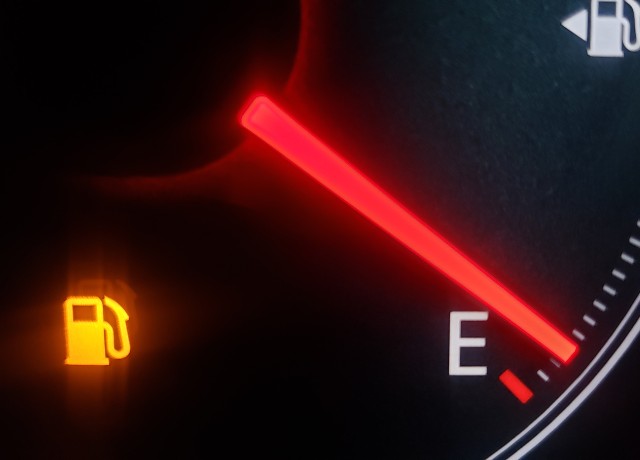
What Causes A Fuel Pressure Sensor To Go Bad?
Wiring Issues:
Wiring issues may be the cause of a bad fuel tank pressure sensor. A damaged or corroded wiring can disrupt or destroy the signal between the fuel pressure sensor and the engine control module.
As a result, the readings could be incorrect or even nonexistent.
In other words, if you experience any of the symptoms associated with a faulty fuel pressure sensor, your wiring may require attention.
Sensor Failure:
Sensors can gradually lose their functionality over time due to a variety of factors, including:
- Physical Damage
- Harsh Conditions
- Normal Wear and Tear
Consequently, their performance and reliability can be affected if they produce inaccurate or completely non-existent measurements.
To ensure optimal and accurate data collection, sensors must be regularly maintained, monitored, and replaced on time.
Fuel Tank Issues:
If the fuel tank is cracked or leaking, it can cause problems with the fuel tank pressure sensor.
An insecure tank makes it impossible to accurately read the fuel tank’s pressure when there is a breach in its integrity.
Sensors must operate in a sealed environment free of all external factors that may affect their performance to provide accurate readings.
Malfunctioning Fuel System Components:
Fuel injectors, fuel pumps, and fuel filters are all crucial components of the fuel system. An incorrect reading and performance issues can result if these components don’t function correctly.
Fuel pumps can malfunction, resulting in engine misfires or stalling due to inadequate fuel delivery. It is also possible for a clogged fuel filter to restrict air flow, resulting in a reduction in performance and efficiency.
An engine’s performance and fuel economy can be affected by malfunctioning fuel injectors. To maintain optimal vehicle performance, these fuel system components must be functioning properly.
Environmental Factors:
There is a strong correlation between the performance of the fuel tank pressure sensor and environmental factors.
It is susceptible to adverse effects caused by extreme temperatures, whether they are high or low.
A sensor malfunction or failure is further increased when corrosive materials are present.
If the fuel tank pressure sensor is to remain reliable and accurate over the long term, it is essential to consider and mitigate these factors.
How To Test The Fuel Pressure Sensor?
A diagnostic scanner or a multimeter can be used to test the fuel rail pressure sensor.
It is easier to identify problems if you compare the diagnostic scanner numbers with the repair instructions.
We highly recommend the INNOVA 5210 scanner for its useful features.
If you don’t have a multimeter, you can use one, but your measurements must be accurate before moving forward. For reliable results, make sure you follow the appropriate steps.
How Do You Fix A Fuel Pump Without Replacing It?
If you can’t afford to replace the fuel pump, here are some things to think about:
Use A Fuel Pressure Gauge:
It is an effective method. A faulty fuel pump can be diagnosed by using it. Your car can be started with a fuel pressure gauge even if its fuel pump is damaged.
Apply Some External Pressure
An engine performance issue can occur when a fuel pump fails, resulting in lower engine pressure.
This problem can be resolved by applying external pressure to the fuel pump, which makes the engine run more smoothly and efficiently.
As a result, your engine will perform optimally and deliver the performance that you require.
Maintain The Engine’s Heat:
To avoid engine damage, let your car cool down after it overheats before restarting.
To minimize engine issues, it is advisable to keep the car running when there is a bad fuel pump.
It is important, however, not to ignore a faulty fuel pump to avoid further issues in the future. To ensure your car’s optimal performance, take care of its cooling system and fuel pump.
How To Replace Your Car’s Fuel Pressure Sensor?
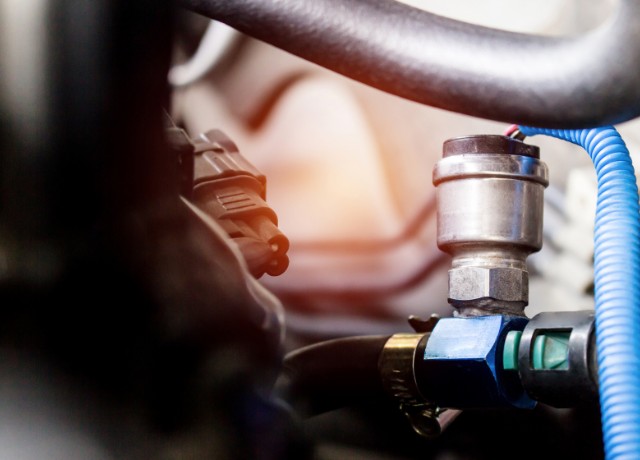
If you lack the necessary tools and expertise to fix a faulty fuel pressure sensor, you should seek the help of a professional. Even though this isn’t an intricate repair, a mistake in the process can exacerbate the problem, making it more difficult to correct.
Providing you have the skills and equipment, here’s how to repair it.
Step-1:
When working on your car’s electronics, disconnect the negative cable from the battery to ensure your safety. Taking this precaution will protect you from potential risks.
Your engine’s plastic cover needs to be removed. The fuel rail and sensor can be accessed by detaching the air intake if necessary.
Step-2:
Put a drip pan underneath your fuel rail’s test port, and locate the test port on the rail. You can relieve the pressure by opening the valve with a small screwdriver.
Step-3:
A fuel pressure sensor can be removed from the fuel rail by disconnecting the electrical harness and mounting hardware.
Make sure the fuel rail and electrical harness associated with the sensor are thoroughly cleaned before installing the new sensor. Sensors will function optimally and last longer with this meticulous preparation.
Step-4:
The new sensor should be installed on the fuel rail, and the mounting hardware should be securely fastened.
Ensure that the new sensor is connected to the electrical harness. After removing the air intake for accessing the fuel rail, the air intake can now be reinstalled.
Step-5:
Reconnect the negative cable to the battery by turning the engine cover on. You’re good to go if you followed the steps correctly!
How Much Does It Cost To Replace A Fuel Pressure Sensor?
Depending on your car model and the repair shop you choose, the cost of replacing the fuel pressure sensor will be between $50 and $250.
By doing it yourself, you can potentially save some money.
It is usually a straightforward process to replace the sensor in most cars. It may be necessary, however, to use a diagnostic tool to eliminate any error codes left behind after replacing the sensor.
Your fuel pressure sensor replacement decision can be influenced by taking these factors into account.
How Much Does It Cost To Replace A Bad Fuel Pump?
Fuel pump replacement costs can vary depending on several factors. A price range of $220 to $1,000 is generally considered reasonable.
Several variables can affect the actual cost, including the make and model of your car, the location, and the mechanic performing the replacement.
As a result of these factors, prices can fluctuate above or below the suggested range.
Compare prices from different service providers and repair shops in your area to ensure you get the best price for your specific car model.
FAQs:
Q: Is it possible for a bad fuel sensor to damage an engine?
Ans: Yes, absolutely! The engine can be damaged by a faulty fuel sensor. This can lead to an imbalanced fuel mixture, either too lean or too rich, which can negatively affect the engine’s performance and lifespan if the sensor fails to provide accurate readings of fuel levels.
Q: What is the cost of replacing a fuel sensor?
Ans: In addition to the make and model of your vehicle, labor charges from the mechanic or dealership can affect the cost of replacing a fuel sensor. In general, parts and labor can cost between $50 and $250.
Q: Can you drive without a fuel sensor?
Ans: Although technically possible, we don’t recommend operating a vehicle without a fuel sensor because of potential complications.
There’s a chance you’ll run out of fuel, there’s a chance your engine might damage, and your emissions will go up. If you have a faulty fuel sensor, you need to fix it right away.
Q: Is it possible for a bad fuel sensor to affect other components of the vehicle?
Ans: It can also have indirect effects on other vehicle components if the fuel sensor malfunctions. By far, the most notable effect of a malfunctioning fuel sensor is its effect on fuel gauge readings and fuel mixture.
If fuel mixtures are incorrectly delivered to the engine, for example, misfires can occur, performance can be diminished, and the catalytic converter or oxygen sensor may be damaged.
Q: If my fuel sensor needs to be checked, how often should I do it?
Ans: If you do not observe malfunction symptoms, you do not need to check the fuel sensor regularly. A professional technician or mechanic should inspect the fuel sensor during routine maintenance or whenever fuel-related issues arise.
It helps maintain the original intent while maintaining optimal wording, structural integrity, readability, and eloquence.
Q: Can a bad fuel sensor be repaired by a DIYer?
Ans: It is generally discouraged to attempt DIY fuel sensor repair. The diagnosis and replacement of fuel sensors require specialized tools and expertise.
To avoid complications and ensure accurate repairs, it is recommended to seek the assistance of a qualified mechanic or technician.
Q: When a fuel sensor fails, what are the long-term effects?
Ans: It can be dangerous to operate a vehicle with a faulty fuel sensor for a long period. Increased fuel consumption, unforeseen breakdowns resulting from depletion, and increased repair expenses may be some of the possible consequences.
For such adverse consequences to be avoided, it is highly recommended that this matter be addressed promptly.
Q: Is it possible to clean a fuel rail pressure sensor?
Ans: It is possible for fuel rail pressure sensors to malfunction due to dirt. However, it is advisable not to take chances with a sensor due to dirt accumulation alone. An expert technician can assist you in ensuring that the cleaning is done properly.
Q: How long does a fuel rail pressure sensor last on average?
Ans: You should expect your fuel rail pressure sensor to last the entire lifespan of your car. The longevity of this vehicle can, however, be reduced to approximately 80,000 miles by certain issues.
The primary cause of its short lifespan is voltage fluctuations due to a faulty battery, a failed alternator, or other electrical system problems.
Q: The fuel rail pressure sensor can be replaced by yourself, right?
Ans: I strongly discourage you from attempting to replace a fuel rail pressure sensor if you possess the skills to create an atom bomb. To replace a fuel rail pressure sensor, multiple components must be removed.
As a result, I recommend that you do not attempt to replace it yourself.
Conclusion:
It can be dangerous and potentially damaging to drive a vehicle with a bad fuel sensor. Your vehicle needs to be taken care of if you want it to last a long time.
If you try to push the limits and go without replacing them for as long as possible, the long-term consequences may outweigh the short-term gains.
Engine misfires, decreases fuel efficiency, or even engine damage can result from neglecting or ignoring a faulty fuel sensor.
Maintaining your car’s performance and improving the miles per gallon will help you save money as well as maximize its performance.
You can extend the life of your car with proper maintenance, thus cutting down on repair costs you could have avoided if you had taken care of it from the beginning.
Drive safely, and don’t let a bad fuel sensor ruin your day!

